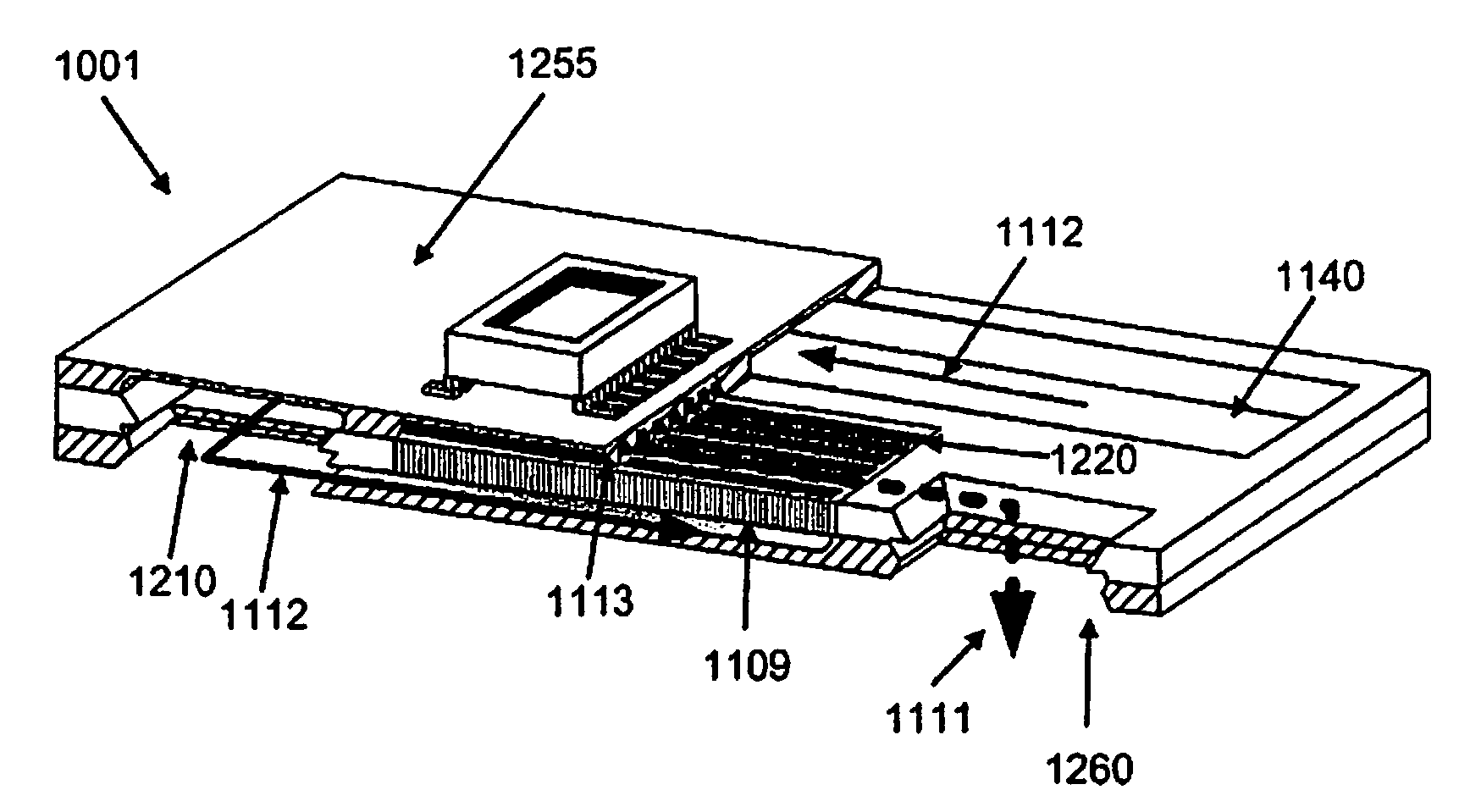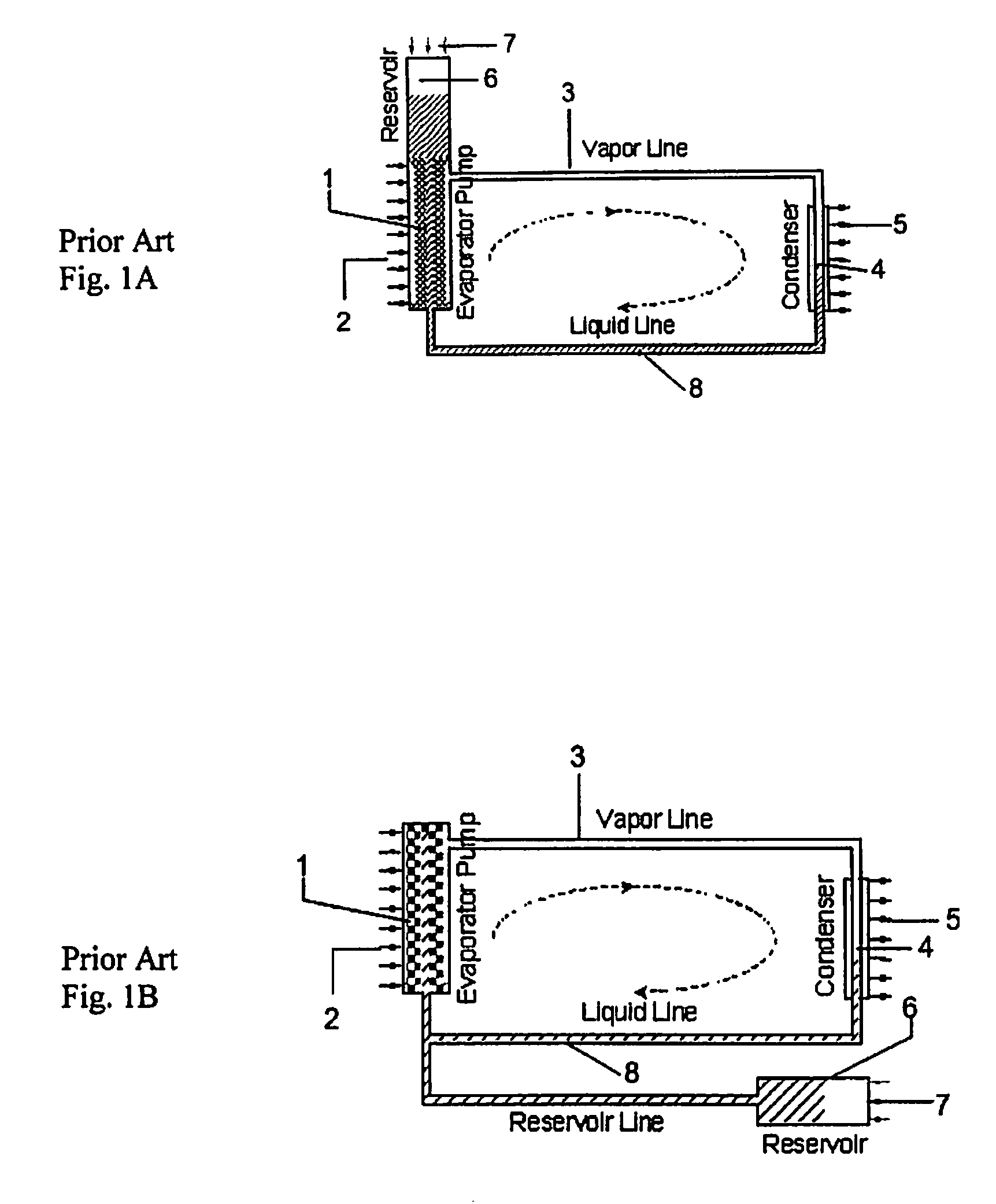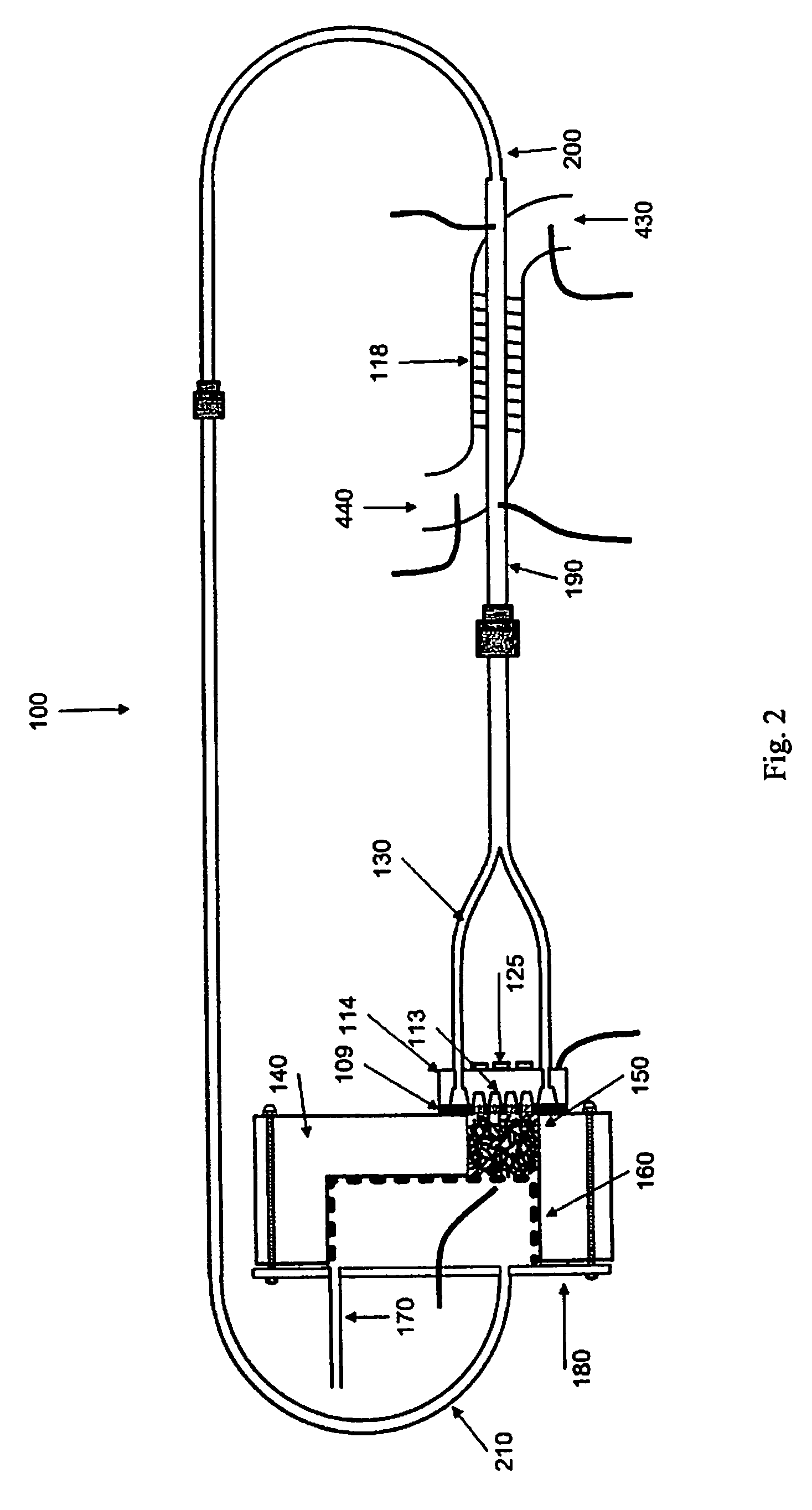System and method of a heat transfer system and a condensor
a heat transfer system and condenser technology, applied in the field of systems and methods of heat transfer systems and condensers, can solve the problems of increasing waste heat generation of new chips, significant problems for waste heat, and the inability of semiconductor makers to find new ways to cool increasingly powerful chips
- Summary
- Abstract
- Description
- Claims
- Application Information
AI Technical Summary
Problems solved by technology
Method used
Image
Examples
Embodiment Construction
[0041]The present invention overcomes problems with the prior art by providing improved thermal transfer devices for removal of heat from a high temperature device, such as integrated circuit chips and microprocessors.
[0042]Two-phase silicon-based thermal transfer devices according to several exemplary embodiments of the present invention are described below. One embodiment of the basic construction of the thermal transfer device 100 is shown in FIG. 2. This embodiment includes an evaporator 101 connected to a condenser 118. The evaporator 101, passage ways 130,210 and the condenser 118 form a closed loop with hermetic sealing. After evacuating the device, using the fill / vacuum port 170, a liquid working fluid 112 is introduced via fill / vacuum port 170. The amount of liquid working fluid 112 introduced is often a fraction of the total loop internal volume. A heat source (e.g., an integrated or attached semiconductor chip or other device) 125 is cooled at the evaporator 101. The prim...
PUM
| Property | Measurement | Unit |
|---|---|---|
| width aspect ratio | aaaaa | aaaaa |
| heat transfer coefficients | aaaaa | aaaaa |
| porosity | aaaaa | aaaaa |
Abstract
Description
Claims
Application Information
 Login to View More
Login to View More - R&D
- Intellectual Property
- Life Sciences
- Materials
- Tech Scout
- Unparalleled Data Quality
- Higher Quality Content
- 60% Fewer Hallucinations
Browse by: Latest US Patents, China's latest patents, Technical Efficacy Thesaurus, Application Domain, Technology Topic, Popular Technical Reports.
© 2025 PatSnap. All rights reserved.Legal|Privacy policy|Modern Slavery Act Transparency Statement|Sitemap|About US| Contact US: help@patsnap.com



